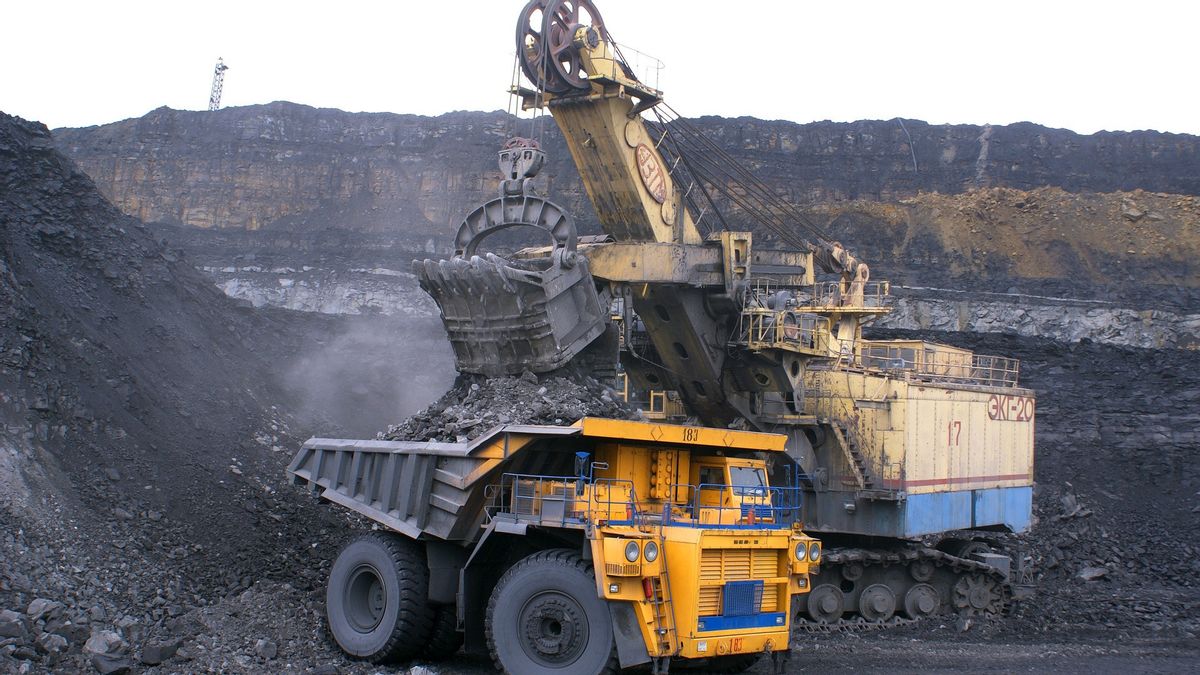JAKARTA - The Reference Coal Price (HBA) in January 2022 experienced a correction to the figure of 158.50 US dollars per tonne. This figure decreased by 1.29 US dollars per tonne from last December 2021, which was 159.79 US dollars per ton.
One of the reasons for this decline was the increase in China's domestic coal production.
"The Chinese government is trying to increase coal production in order to meet domestic needs which has an impact on increasing domestic coal stocks," said the Head of the Communications, Public Information Services and Cooperation Bureau (KLIK) of the Ministry of Energy and Mineral Resources Agung Pribadi in Jakarta, Thursday, January 6. 2022.
Throughout 2021, the HBA experienced a fairly rapid increase. Even had reached the highest level in the last decade.
Opened at the level of 75.84 US dollars per tonne in January, HBA experienced an increase in February to 87.79 US dollars per tonne, briefly dropping in March to 84.47 US dollars per tonne.
Furthermore, it continued to increase in a row until November 2021 at 215.01 US dollars per tonne.
The details are April at 86.68 US dollars, May (89.74 US dollars per ton), June (100.33 US dollars per ton), July (115.35 US dollars per ton), August (130.99 dollars). US dollars per tonne), September (150.03 US dollars per tonne), and October (161.63 US dollars per tonne). However, it experienced a decline in December (159.79 US dollars per tonne).
On the other hand, the arrival of winter in the northern part of the world has led to a sharp increase in the demand for electricity for heating and gas supply constraints in Europe have also contributed to the decline in prices.
"Countries in Europe are turning to coal for power generation," Agung added.
HBA itself is a price obtained from the average index of the Indonesia Coal Index (ICI), Newcastle Export Index (NEX), Globalcoal Newcastle Index (GCNC), and Platt's 5900 in the previous month, with quality equivalent to 6322 kcal/kg GAR. , Total Moisture 8 percent, Total Sulfur 0.8 percent, and Ash 15 percent.
Later, this price will be used directly in the sale and purchase of coal commodities (spot) for one month at the point of sale delivery on a Free on Board basis on a transport vessel (FOB Veseel).
There are two derivative factors that influence the movement of HBA, namely, supply and demand. In terms of supply derivatives, it is influenced by season (weather), mining techniques, supplier country policies, to supply chain technicalities such as trains, barges, and loading terminals.
Meanwhile, the derivative demand factor is influenced by falling electricity demand, which correlates with industrial conditions, import policies, and competition with other energy commodities, such as LNG, nuclear, and hydro.
The English, Chinese, Japanese, Arabic, and French versions are automatically generated by the AI. So there may still be inaccuracies in translating, please always see Indonesian as our main language. (system supported by DigitalSiber.id)













